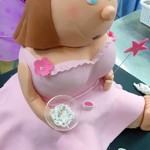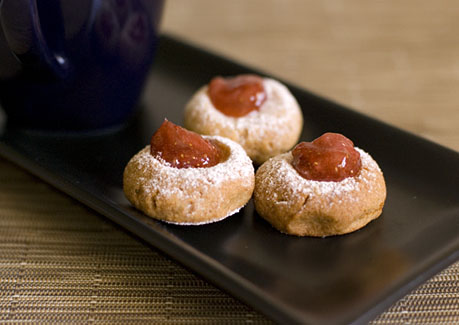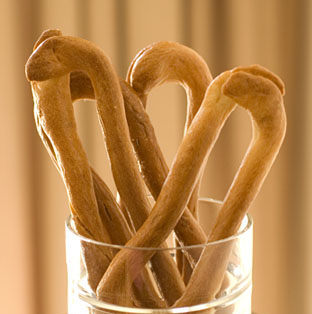I made this! Pt. 4
Isn’t she pretty? I didn’t want to name her, but I must admit, I still felt a bit of a pang when I handed her over to Jillian, who met me at the end of the class to adopt my cake. After you spend two straight days moulding her, dressing her, fixing flowers in her hair and adjusting her cakey boobs, you kind of get attached to this mass of mud cake and fondant.
She is a Naughty Fairy cake, which I learnt how to make in Planet Cake’s Basics 104 class. I’ve attended a few of their other classes before, but I specifically signed up for this class (which was spread out over two days) because I’d never made a 3D cake before, and figured, once you knew the basics, you could apply this skill to any other type of 3D cake. Not to mention the fact that it’s so much fun and you get to meet and ‘talk cake’ with a whole bunch of other like-minded people. Lorinda, for example, who makes the most gorgeous looking cakes (and she has won prizes for them too!). You might want to consider her if you ever need a cake in the future.
The other great thing about this class, apart from the fact that the instructor Handi Mulyana made everything look so easy, was that you could go nuts and customise your fairy as much as you wanted; from skin colour and hair colour, to the style of dress and accessories – as can be seen from the group shot of all the fairy cakes (or the graduating class of 104, as I like to call it). Note the ciggie in the demo fairy cake’s mouth on the far right, and the one of the far left, made by Linda, which has a touch of the Dolly Partons about her (the cake that is, not Linda!).
Jillian sent me an email this morning to let me know that the Fairy cake was very much appreciated at her dinner party. So she wasn’t just a naughty fairy, but a very happy one as well!
Planet Cake
106 Beattie Street
Balmain 2041.










